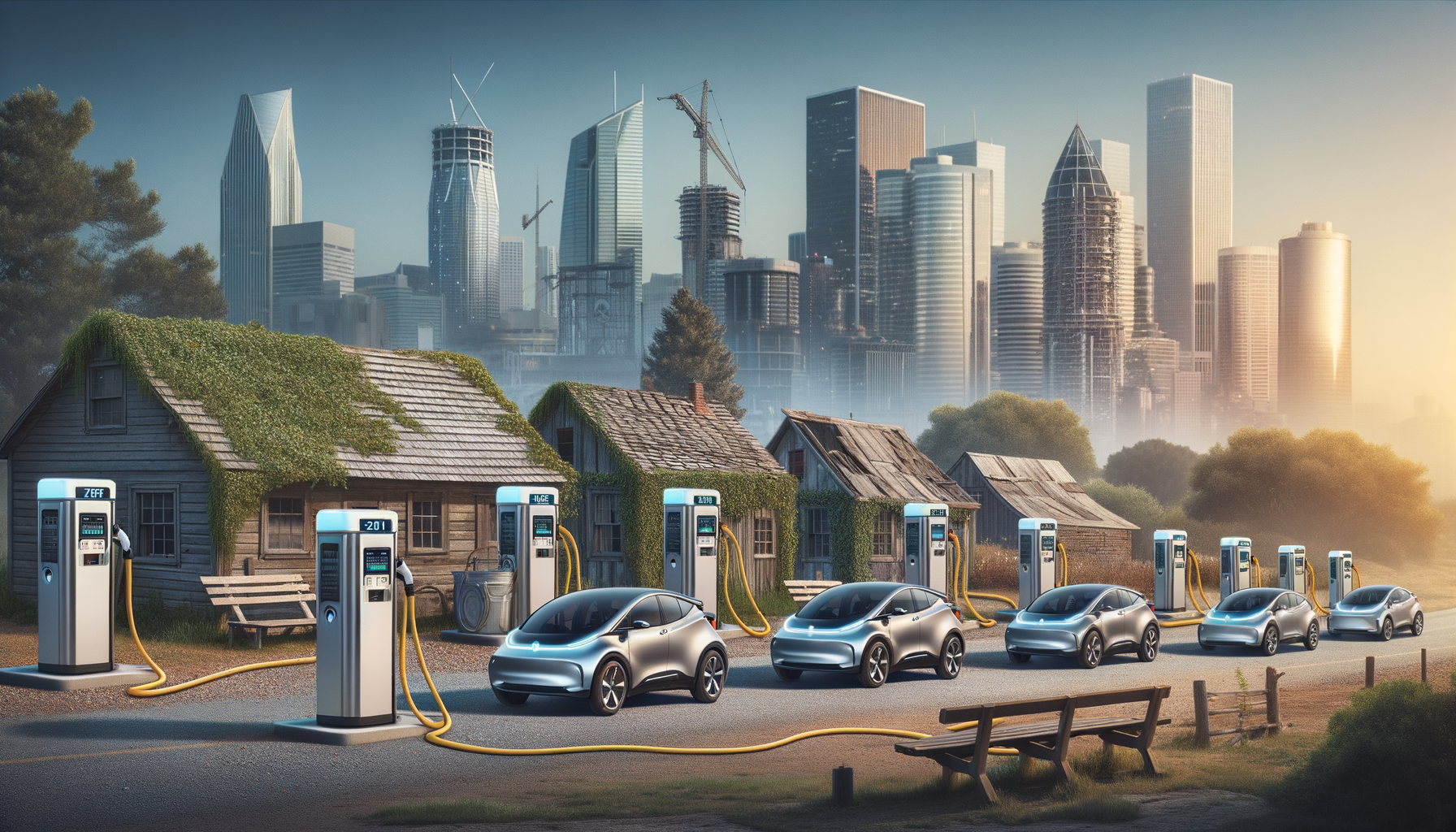The Dawn of Electric Charging Infrastructure
The journey of electric vehicle (EV) charging stations began as a modest endeavor, driven by the need to support the nascent electric car industry. Initially, these stations were sparse, primarily located in urban areas and often at dealerships and select public locations. As the demand for electric cars grew, so too did the necessity for a more comprehensive charging network.
The early charging stations were relatively simple, offering basic charging capabilities at lower power levels. However, as technology progressed, these stations evolved to provide faster and more efficient charging options. This evolution was crucial in addressing the range anxiety experienced by many potential EV buyers, who feared running out of power without a nearby charging option.
Today, charging stations have become more sophisticated, incorporating smart technology that allows for better energy management and user convenience. Features such as mobile app integration, real-time availability updates, and the ability to reserve charging slots have transformed the user experience. This evolution not only supports the growing number of electric vehicles but also plays a vital role in the broader adoption of sustainable transportation solutions.
Technological Advancements in Charging Stations
The technological advancements in charging stations have been pivotal in enhancing the functionality and accessibility of EVs. One major development is the introduction of fast-charging stations, which significantly reduce the time required to charge a vehicle compared to traditional methods. These stations use direct current (DC) to charge batteries quickly, making long-distance travel more feasible for electric vehicle owners.
Furthermore, the integration of renewable energy sources, such as solar panels, into charging stations is becoming increasingly common. This not only provides a sustainable energy supply but also reduces the overall carbon footprint of electric vehicles. Additionally, some stations are equipped with battery storage systems that store excess energy generated during peak sunlight hours, ensuring a consistent power supply even when the sun isn’t shining.
Another significant advancement is the development of wireless charging technology. Although still in its early stages, wireless charging offers a glimpse into a future where EV owners can simply park their cars over a charging pad without the need for cables. This technology promises to make charging even more convenient and user-friendly, further encouraging the adoption of electric vehicles.
The Role of Government and Private Sector in Expansion
The expansion of EV charging infrastructure is a collaborative effort between government entities and the private sector. Governments around the world are implementing policies and providing incentives to promote the installation of charging stations. These initiatives often include grants, tax credits, and subsidies aimed at reducing the financial burden on businesses and municipalities looking to invest in charging infrastructure.
In addition to government support, private companies are playing a crucial role in the expansion of charging networks. Many businesses are recognizing the potential of electric vehicles and are investing in charging stations as a way to attract eco-conscious customers and employees. Retailers, hotels, and even restaurants are installing charging stations to enhance their offerings and provide added value to their patrons.
This partnership between the public and private sectors is essential for creating a robust and accessible charging network. By working together, these entities can ensure that charging stations are strategically located to meet the needs of EV drivers, whether they are commuting within a city or traveling long distances.
Challenges and Opportunities in Charging Station Deployment
Despite the progress made in developing charging infrastructure, several challenges remain. One significant issue is the uneven distribution of charging stations, with rural and underserved areas often lacking adequate access. This disparity can hinder the widespread adoption of electric vehicles, as potential buyers may be deterred by the lack of charging options in their vicinity.
Another challenge is the high cost of installing and maintaining charging stations. While government incentives can help offset some of these expenses, the financial burden remains a barrier for many businesses and municipalities. Additionally, the rapid pace of technological advancements means that stations can quickly become outdated, requiring further investment to stay current.
However, these challenges also present opportunities for innovation and growth. Companies specializing in charging solutions are constantly seeking ways to reduce costs and improve efficiency, leading to new technologies and business models. For example, some companies are exploring subscription-based services that offer unlimited charging for a monthly fee, providing a steady revenue stream and encouraging more frequent use of electric vehicles.
The Future of Electric Vehicle Charging Stations
Looking ahead, the future of electric vehicle charging stations is bright, with numerous developments on the horizon. One promising trend is the integration of smart grid technology, which allows for better energy management and load balancing. This technology can help prevent grid overloads and ensure a stable power supply, even as the number of electric vehicles continues to grow.
Additionally, the concept of vehicle-to-grid (V2G) technology is gaining traction. V2G allows electric vehicles to not only draw power from the grid but also return excess energy stored in their batteries back to the grid. This capability can help stabilize the grid during peak demand periods and provide an additional revenue stream for EV owners.
As the world continues to prioritize sustainability and reduce reliance on fossil fuels, the role of electric vehicle charging stations will only become more critical. By embracing innovation and collaboration, the industry can overcome current challenges and pave the way for a cleaner, more sustainable future.








